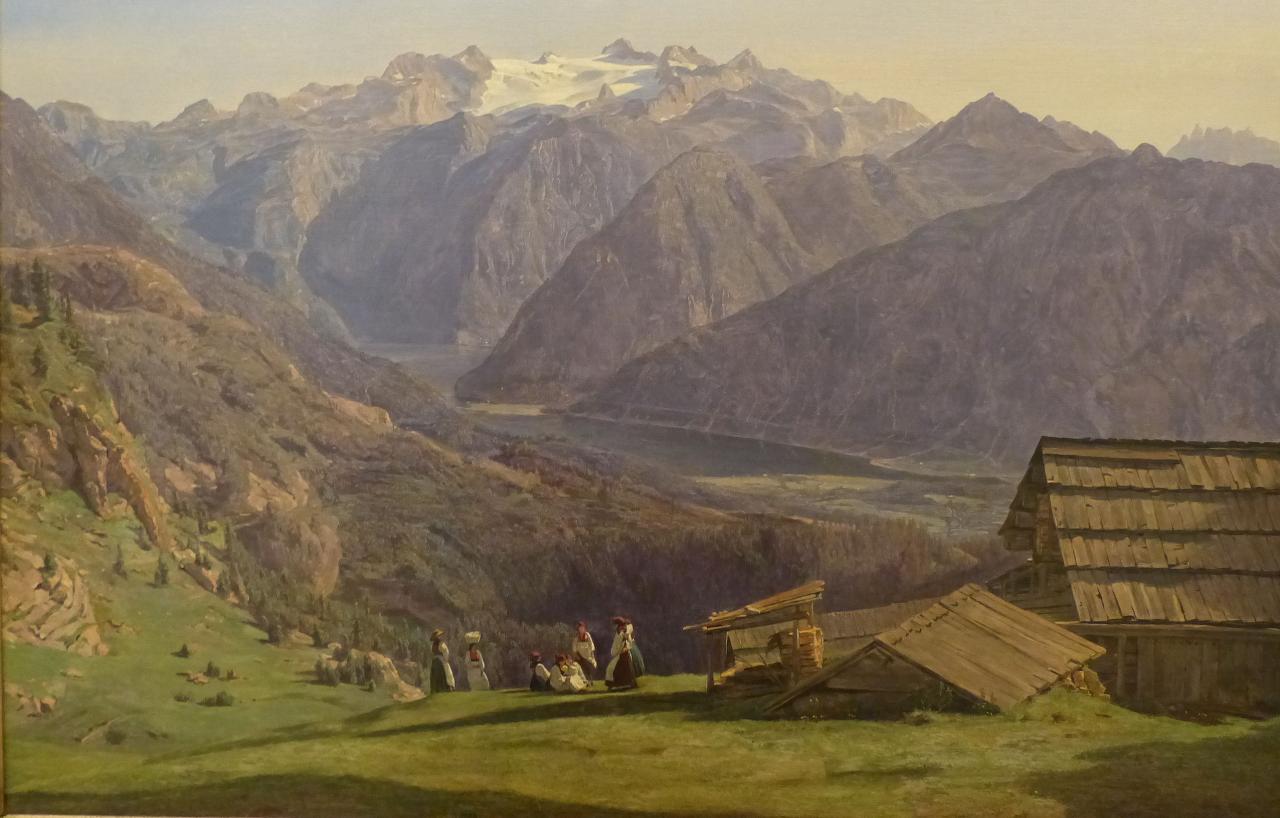Qualifying Key Attribute
Millennia-old salt industry and related economic sectors
7000 years of salt - The oldest industrial landscape in the world
Hallstatt was already a central hub in a far-reaching trade and distribution network during prehistoric times. A deer antler pickaxe discovered in the 19th century provides evidence of a 7,000-year-old tradition. Mining traces date back to around 1500 BC. At that time, salt was extracted in a division-of-labor system, almost industrial in scale. In 2003, a mobile staircase was discovered and dated to around 1100 BC. The so-called “Northern Group” was likely destroyed by a debris flow.
Around 800 BC, mining resumed at a different site with new technology — this phase is associated with the “Eastern Group.” The rich burial grounds from this period gave rise to the term “Hallstatt Culture.” This flourishing phase likely ended with another natural disaster around 350 BC.
From Roman times, archaeological finds have been preserved in the Lahn area of Hallstatt.
Medieval mining began in 1311 with the founding of “Hallstatt” (= salt site) by the Habsburgs.
In the 16th century, the demand for salt rose dramatically and timber became scarce. As a result, part of the Hallstatt brine was transported via pipeline ( Soleleitung) to the newly established saltworks in Ebensee.
In 1750, the market town of Hallstatt was destroyed by fire. The brine facilities were rebuilt in today‘s district of Lahn, where they remained until the saltworks were shut down and the buildings dismantled in the 1960s.
Transport - The Boatmen and Horsemen of the Traun
After the Traun River was made navigable, most of the salt was shipped in flat-bottomed boats (called Zillen), up to 30 meters long. Every morning, salt boats gathered at the Steeg sluice, each carrying about 10 tons of salt downstream. Horses pulled the empty boats back upstream over two days — a process known as the Gegentrieb.
In the 17th century, Hallstatt alone consumed nearly 40,000 cubic meters of wood annually. Twice as many people worked in the forests as in the saltworks. Sustainable and resource-efficient practices were essential. Tree trunks were transported down into the valley and to the saltworks using dammed-up water (sluices) or man-made wooden slides (Riesen).
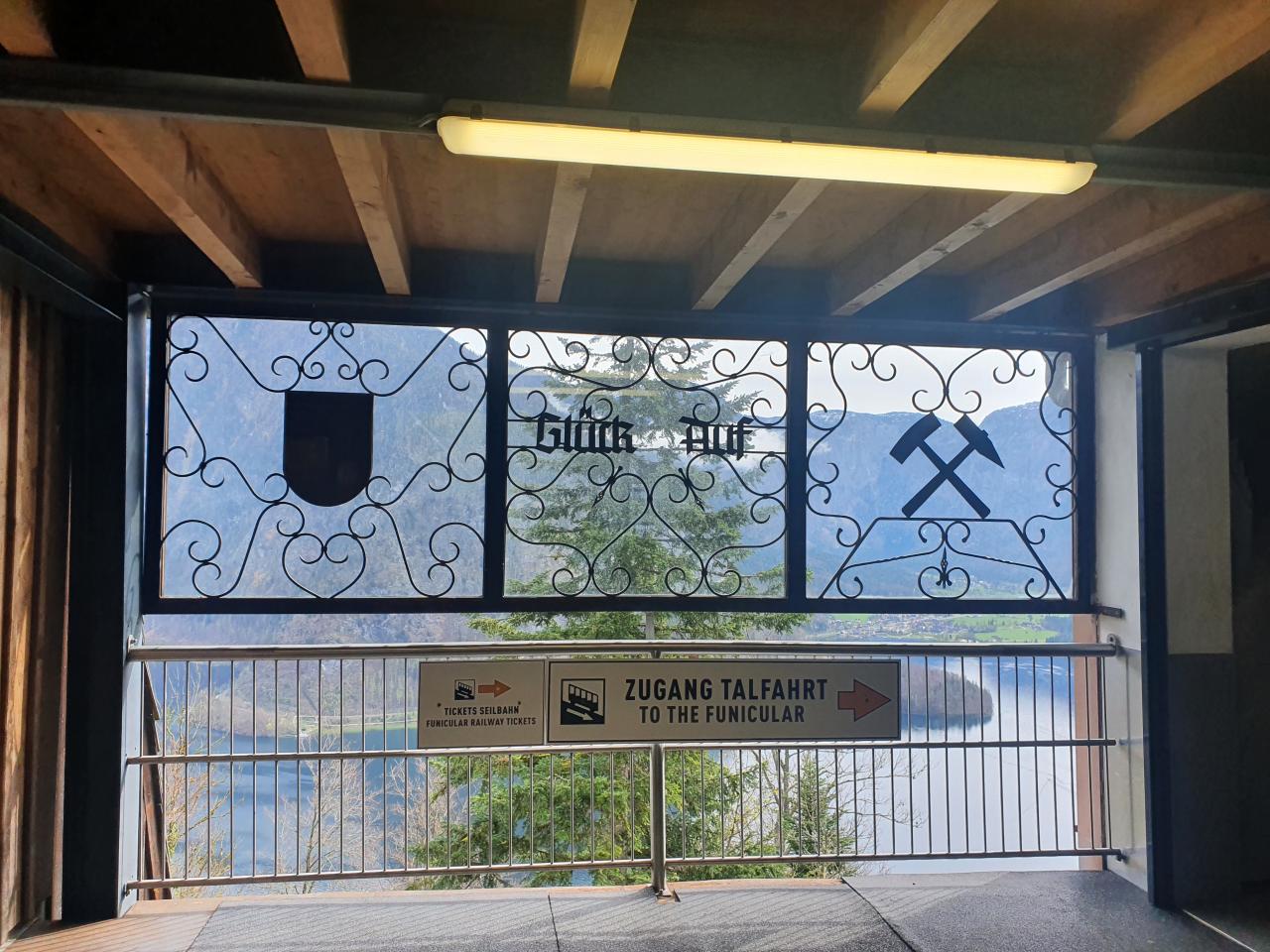
Qualifying Key Attribute
Site of Groundbreaking Research and Interpretation
Research - Site of groundbreaking research and education
The World Heritage region first opened up to geologists and naturalists due to salt extraction. As early as before 1800, explorations for coal deposits were carried out in vain because wood was constantly scarce.
The industrial landscape was embedded in breathtaking nature. Alexander von Humboldt praised it enthusiastically in 1797:
„I confess that I know no such natural scenes in Switzerland as those in Upper Austria...“
Geologists and Natural Scientists
For geologists, this landscape is a window into ancient time periods. This is reflected in numerous “classic localities” of Paleozoic (Haselgebirge) and especially Mesozoic rocks. Terms such as Dachstein limestone, Hierlatz limestone, and Gosau formations were coined here. The Hallstatt limestone contains the richest ammonite forms from the Triassic period worldwide. The geological exploration of the Dachstein area began with Friedrich Simony (1813–1896). His masterpiece, The Dachstein Mountains (1889–1895), aroused great interest. Since 2007, the “Friedrich Simony World Heritage Award” has been awarded annually in his honor.
Geological congresses are held regularly in the region, and parts of the geological strata serve as scientific reference points (“Golden Spike”). This importance also applies to archaeology. The “Man in Salt” found in a mine in 1734 would certainly be comparable to the discovery of Ötzi in 1991. However, at the time, no one recognized the value of the find, and it was lost to posterity.
Johann Georg Ramsauer
Johann Georg Ramsauer (1795–1874) is regarded as the discoverer of the burial site after workers alerted him to finds during gravel excavations in 1846. By 1863, he was able to document around 1,000 graves.
In 1874, the Swedish prehistorian Hans Hildebrand proposed naming the era around 800 to 400 BC the “Hallstatt period.” For modern archaeology, the preservation conditions in the mine are optimal, allowing conclusions about diet and clothing that have disappeared elsewhere. Already in the 19th century, the Natural History Museum in Vienna took over numerous finds and remains a leading institution to this day.
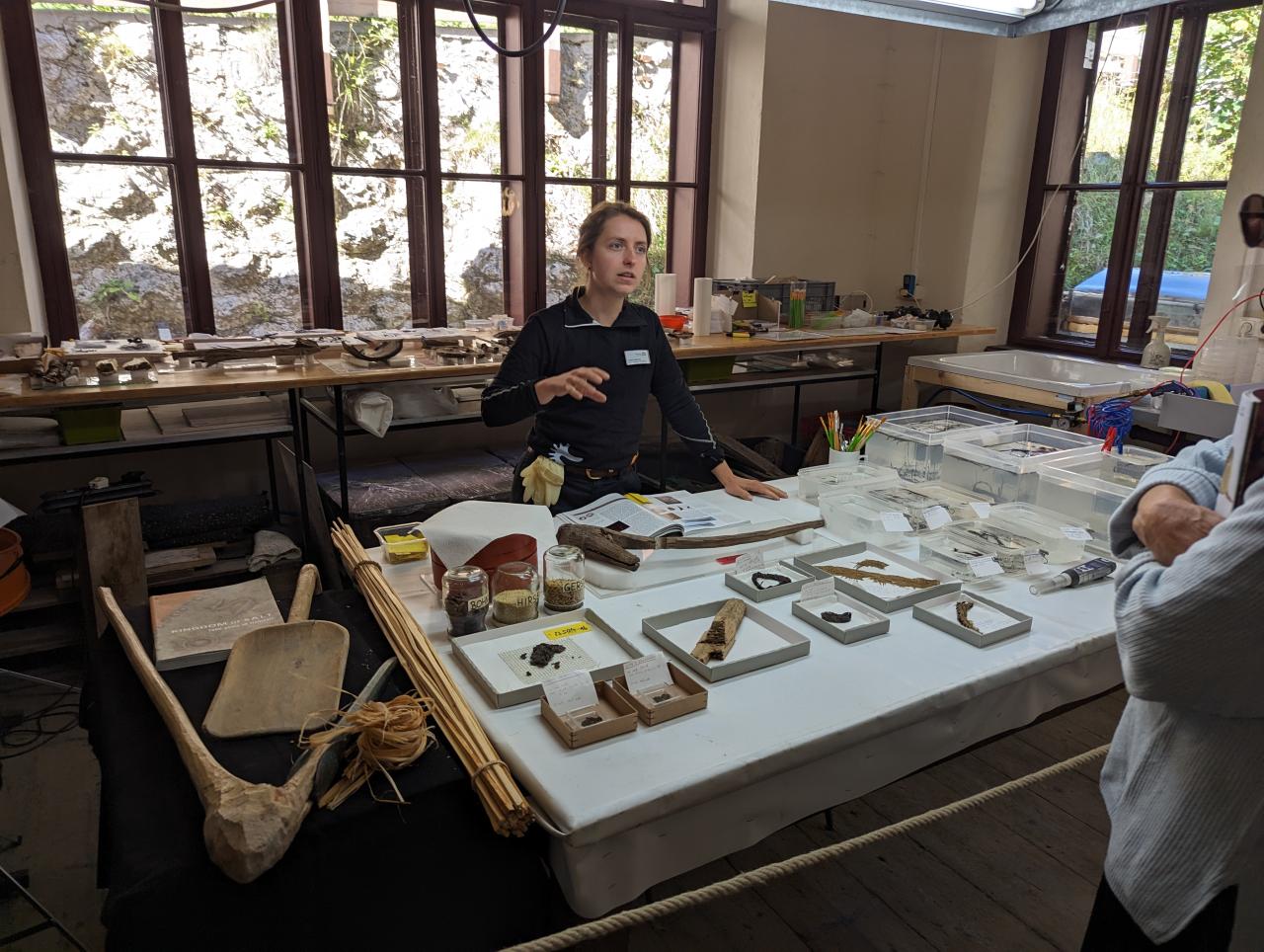
Im Rahmen von Archäologie am Berg (jährlich im September) präsentieren Expert*innen aktuelle Forschungsergebnisse.
Qualifying Key Attribute
Architectural Heritage of High Significance in Alpine Regions
Built Heritage - Alpine architectural heritage of great significance
In the Salzkammergut regional and functional based construction prevailed. For the saltworks, it was important to conserve the raw material wood as much as possible, and new buildings were only reluctantly approved. The „Reformationslibelle“ building regulations of 1524 and 1563 were the first construction codes. Around 1800, the Salt authority established three “building classes” for houses, which still largely shape the appearance of the area today.
Hallstatt - The heart of the Salzkammergut
The historic center of Hallstatt (now the market square) was designed to serve the needs of salt production. With growing prosperity, Hallstatt developed an urban character. After the fire of 1750, production and administration moved to the district of Lahn. This is how the so-called Lower and Upper Market Squares acquired their characteristic ensemble forms, still present today. Additionally, it became forbidden to store wood within the town itself, which led to the construction of typical wooden huts along the lakeshore, where residents collected firewood from their boat sheds using flat-bottomed boats called Zillen (locally known as Fuhr). Even today, buildings from this period can be found, such as the saltworks administration office next to the Calvary Chapel and the Salt Hospital (which provides access to the funicular railway). In contrast, the boiling houses and other production facilities fell victim to demolition in the 1960s, making way for the HTBLA Hallstatt technical school, where boat building and musical instrument making are among the courses offered.
Form follows function
One will search in vain for princely mansions, as nobility was forbidden to settle here in order to protect the fragile forests, needed for the salt production, from being wasted on hunting grounds. Even the Habsburgs themselves only had utilitarian buildings constructed. This changed in the 19th century. The Sudhäusers (salt houses) then combined functionality with certain aesthetic elements.
The same applies to many summer spa guests who commissioned upper-middle-class villas. These so-called “Swiss houses” evolved through an “Ischl style” into the elegant “Salzkammergut Villa”, featuring abundant wood decoration, verandas, balconies, and Salettls (small pavilions).
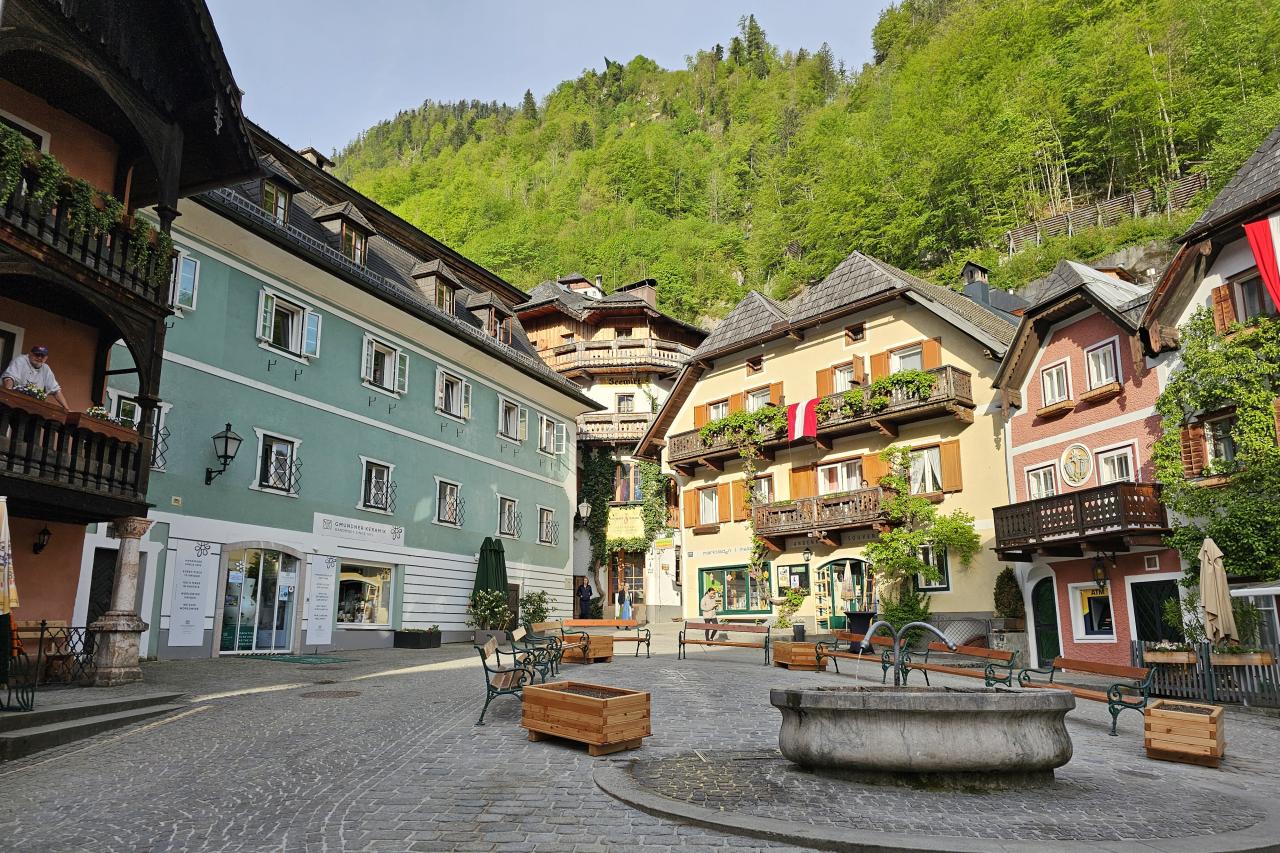
Qualifying Key Attribute
Ideal miniature of the entire Alps, both in natural features and in the developed cultural landscape
Alpine ideal - An ideal miniature of the entire Alps in nature and culture
The Salzkammergut—and thus the World Heritage region—was already known in the early days of tourism as the “Austrian Switzerland.” This designation first appeared in 1811. The comparison to Switzerland was meant to emphasize its status as an Idealtypus of an alpine natural landscape. The centuries-old industrial salt production blends harmoniously into the breathtaking scenery.
Glaciers carved the landscape
This balanced interaction of the World Heritage region’s mountains, lakes, and forests owes itself to the Ice Age. The Dachstein glacier shaped the broad valley.The was meltwater collected in the basin of today‘s Lake Hallstatt. Evidence of the last Ice Age can be seen, for example, in the glacier garden in Hallstatt’s Echerntal, which was opened in 1926 and newly established in 1991, where the power of water shaped glacial mills. The picturesque Gosausee at the foot of the spectacular peaks of the Gosaukamm is also a relic of the last major advance of the Dachstein glaciers.
Dachstein - alpine paradise
The Dachstein plateau with its glaciers—called the “Snow Mountain” around 1800—was already used for alpine pasture farming during Roman times. Otherwise, only smugglers or poachers dared to venture onto the vast karst plateaus. In September 1810, Archduke Ludwig—the brother of Emperor Franz I.—came to Hallstatt and undertook several mountain tours from there. In 1812, Archduke Karl reached the glacier forefield; since then, the Hallstatt Glacier has also been called “Karl’s Ice Field”. Only in 1832 did Peter Gappmayr from Filzmoos climb the summit via the Gosau Glacier. In September 1843, Johann Wallner from Hallstatt guided Friedrich Simony to the summit, the man who became the Dachsteins most passionate advocate and diligent explorer. The region‘s forests are not “primeval forests” but purely managed and commercial forests that developed through centuries of logging and reforestation. This was necessary to secure long-term operations. However, these young forests only benefited the grandchildren or great-grandchildren. Long before the term “sustainability” arose in the 19th century, it was already practiced here—almost invented.
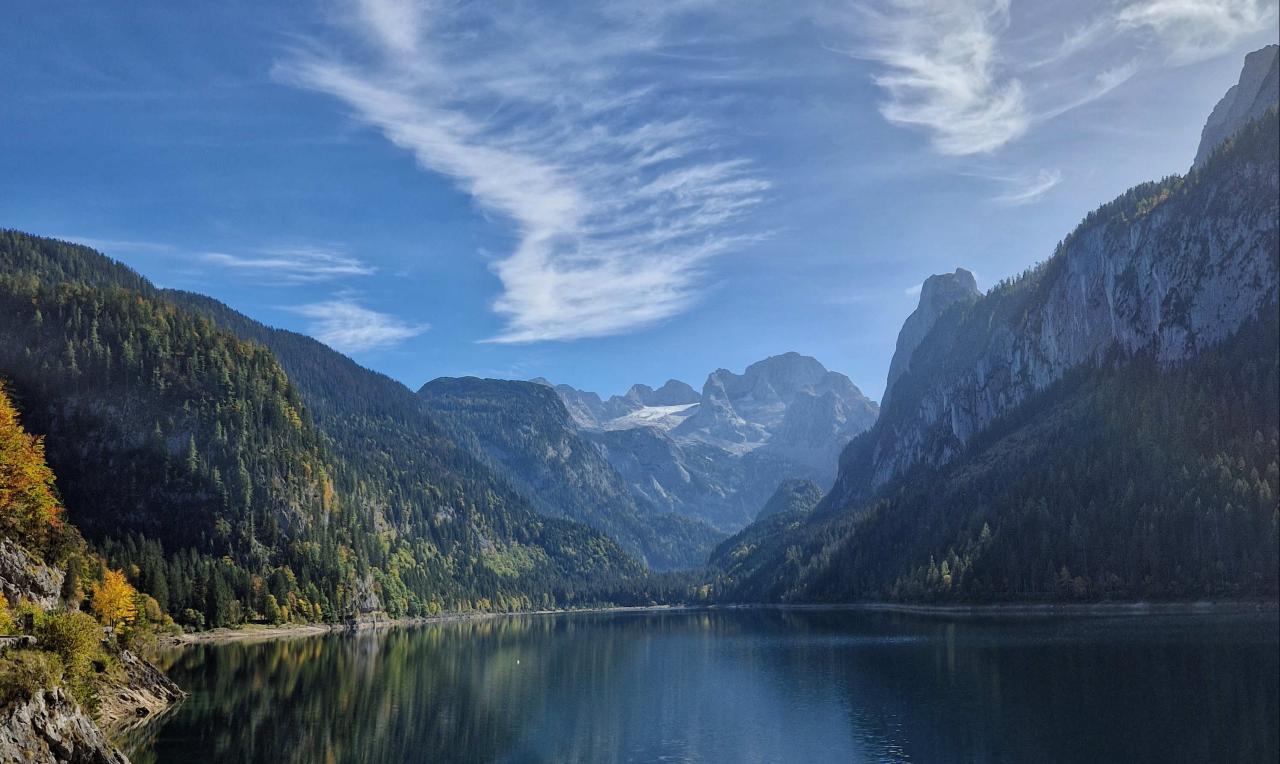
Qualifying Key Attribute
Landscape of striking drama and artistic inspiration
Inspiration - A landscape rich in drama and a source of artistic inspiration
The Salzkammergut, and especially the World Heritage region, became the epitome of Biedermeier painting. Already in the early 1820s, paintings by Jakob Alt and Thomas Ender appeared, mainly featuring motifs from Ischl and Hallstatt. After 1840, it was almost impossible to find an exhibition in Vienna without depictions of the Dachstein, Gosausee, or Waldbachstrub.
Painters and Writers
Following this pictorial discovery came the literary conquest, where writers sought Salzkammergut locations for their stories and found inspiration for their narratives. This group included, for example, Adalbert Stifter. No fewer than nine of his works recall the Salzkammergut. The best-known work is Der Bergkristall (The Mountain Crystal), which Stifter wrote after his visit to the famous researcher Friedrich Simony in Hallstatt in 1845. Shortly before 1900, the Impressionists were drawn to the World Heritage region. The “mill painter” Emil Jakob Schindler and his circle found atmospheric compositions of old buildings and tall meadows. In 1898, Gustav Klimt also spent a summer in St. Agatha in Goisern.
Traditional craftmanship
Besides the dominant economic factor of salt from the saltworks, there were only a few trades that flourished. Specific crafts developed from the artisanal salt economy. Around 1735, three families in Goisern began violin making in the Salzkammergut. The Gandl, Kefer, and Peer families practiced this craft for several generations from Ischl to Aussee. The prosperity of this trade lasted until about 1780. In the neighboring Gosau, the woodcutter Michael Laserer (1724–1797) first made wooden wheel clocks around 1770, which became known as “Holzhacker-Uhren” (woodcutter clocks). His son Josef (1774–1860) likely continued this craft into the 1820s and 1830s. At the end of the 19th century, the “Goiserer shoe” began its triumphal march—a split-stitched shoe with iron fittings, ideal not only for the heavy work of the woodcutters but also for mountain tours and hunting trips. hen the emperor and empress became customers, the shoe became fashionable among the nobility, and the “Goiserer” turned into a brand.
